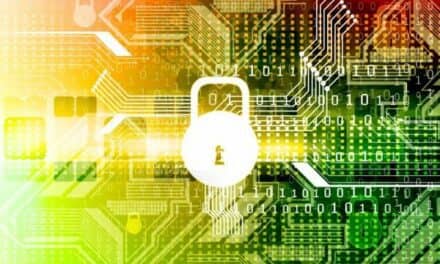Denver-based Coalfire has released a list of its top 10 cybersecurity predictions for 2015. Coalfire reportedly conducts more than 1,000 audits and assessments of systems containing sensitive data each year and, based on the trends identified in those investigations, makes predictions for the coming year. According to the company, the cost of cybersecurity measures are likely to double in 2015 as a result of increasing cyber-crime, cyber-ware, and cyber-terrorism. (See full infographic below.)
“It’s time for companies to start looking ahead at the next generation of threats and to step up their game to better protect consumer data,” said Rick Dakin, Coalfire’s CEO and chief security strategist. “The threat landscape is continuously evolving. If you don’t already have threat intelligence and response plans ready for implementation in 2015, now is the time.”
According to the company’s announcement, Dakin believes the numerous high-profile data breaches that made news headlines this year made it clear that in 2014 things changed in the world of information security, with consumers losing confidence that companies make protecting their customers’ private information a priority.
Coalfire’s list of top 10 cybersecurity predictions for 2015 follows:
- Motivated Threat Actors – The number and sophistication of cyber threats will continue to increase exponentially. Fueled by both geopolitics and economic incentives, international (and often state-sponsored) criminal organizations will escalate their development of offensive cyber capabilities.
- Redefining the Defense – The demands of cybersecurity are fundamentally changing IT. Cyber risk management and security compliance will take an equal weight to other design criteria like functionality, capacity, and performance. Financial ROIs will be balanced by a new understanding of risk exposure for subpar solutions.
- Three Heads Versus One – In large organizations, there are technical roles that require the knowledge and experience of CIOs, CTOs, and CISOs. While some have predicted the death of the CIO role, we see instead a balancing of responsibility between three peers.
- Investments Will Increase – In the face of pernicious new threats, the cost of cybersecurity and risk management will remain on track to double over the next 3 years.
- New Fronts – The expansion of mobility, cloud computing, bring your own device (BYOD) policies, and the Internet of Things will provide new (and previously unforeseen) opportunities for cyber-crime, cyber-warfare, and cyber-terrorism.
- Universal Monitoring – As a result of cyber-incidents, every organization (or person) will be using some form of continuous monitoring service (threat, scanning, identity or credit). These will be legislated, mandated by financials institutions or insurers, or acquired on their own behalf.
- Business Leadership on Policy Development – Executive leadership will lead to further development and maturation of standards across private sector and governmental organizations. This approach to security and cyber risk management will reduce the potential for “unforeseen” damage from cyber-attacks, cyber warfare and cyber-terrorism.
- New Threat Detection and Response Technologies – There will be an increased use of crowdsourcing, machine intelligence, and cognitive/advanced analytics to detect and stay ahead of threats. Bounties for catching bad actors and advanced algorithmics will help the “good guys” identify and stay ahead of the hordes of malicious players.
- Improved Security – New and better applications of authentication, EMV, encryption, and tokenized solutions will increase the security of payments and other personal and confidential information. Apple Pay and other next-generation solutions will overcome anti-NFC inertia and lead to increasing adoption of mobile-based security technologies for both retail payment and other applications, such as healthcare, where critical and confidential information is exchanged.
- Back to Offense – We will see the beginnings of a shift from cyber-defense to cyber-offense. From attempting to build impenetrable systems, to building systems that make it possible to identify attackers and provide the means to prosecute, frustrate, or delay them.
More information about Coalfire and its cybersecurity predictions may be found on the Coalfire website.






